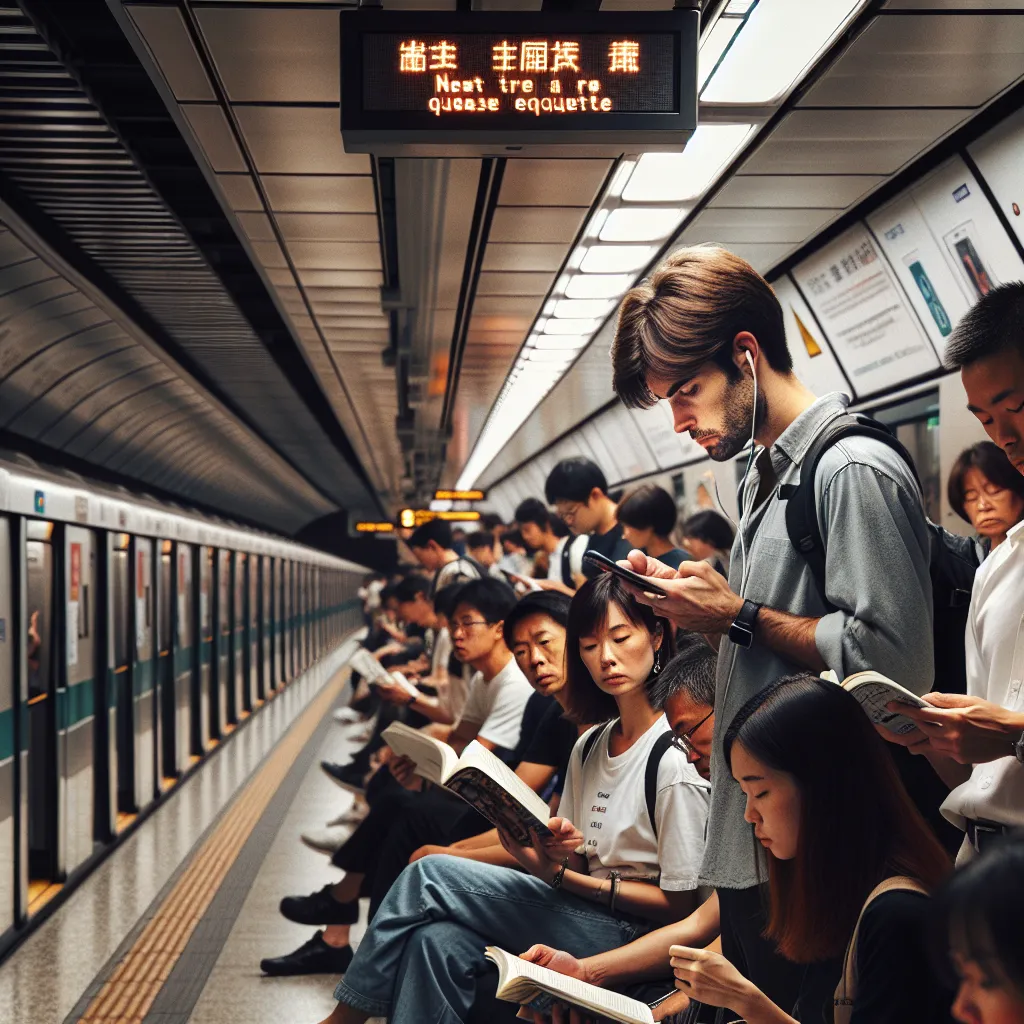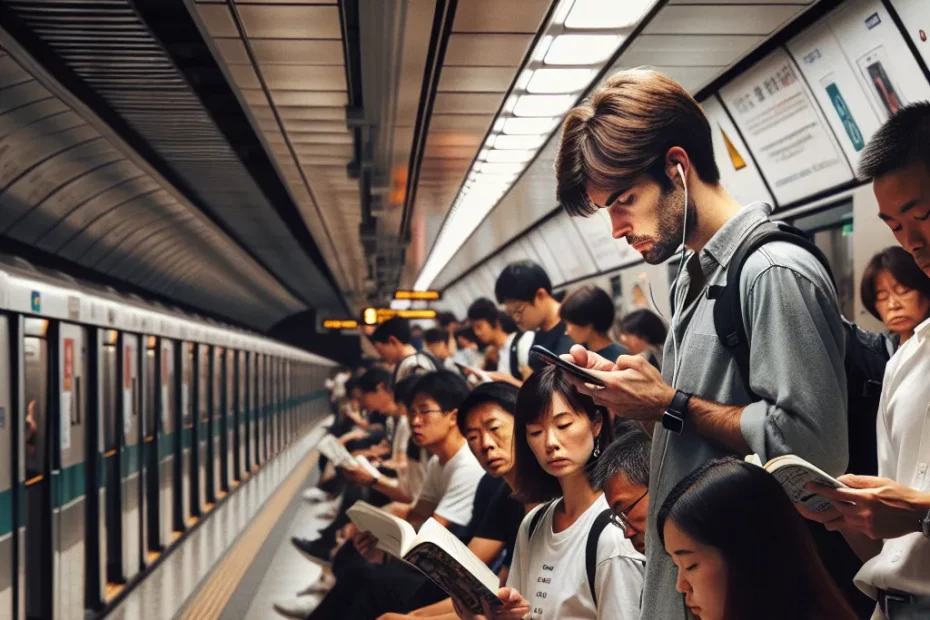As we go about our daily lives, it’s important to remember the impact of our actions on those around us. One common scenario where this consideration is crucial is in queues and crowded places. Understanding and respecting queueing etiquette can make the experience smoother and more pleasant for everyone involved. Cutting in lines or pushing in crowded places not only disrupts the flow but also shows a lack of consideration for others. By following some simple tips and being mindful of our behavior, we can create a more harmonious environment for everyone. Let’s explore the consequences of disregarding queueing etiquette and discuss ways to navigate crowded spaces with respect and courtesy. Remember, a little awareness and consideration go a long way in making our interactions with others more positive and enjoyable.

Understanding Queueing Etiquette
Queueing etiquette is a fundamental aspect of social behavior that helps maintain order and respect in public spaces. Whether you’re waiting in line at a busy coffee shop or navigating through a crowded subway station, understanding and following queueing etiquette is essential for a harmonious experience for everyone involved.
Patience is Key
Patience is one of the most important aspects of queueing etiquette. Remember that everyone is in the same situation, waiting for their turn. Avoid pushing or cutting in line, as this can create tension and disrupt the flow of the queue.
Respect Personal Space
When queuing in crowded places, it’s crucial to respect the personal space of others. Maintain a reasonable distance between yourself and the person in front of you to ensure everyone feels comfortable and secure.
Practice Politeness
A simple “excuse me” or “thank you” can go a long way in queueing situations. If you need to pass by someone or accidentally bump into them, a polite gesture can help diffuse any potential conflict.
Follow the Order
Queues operate on a first-come, first-served basis. It’s important to respect the order in which people arrived and wait your turn. Trying to push ahead can lead to confusion and frustration for everyone involved.
Mind Your Surroundings
Be aware of your surroundings when queuing. Avoid blocking pathways or entrances, and make space for others to pass by. By being considerate of those around you, you contribute to a smoother queuing experience for everyone.
Supermarket Etiquette
In supermarkets, follow the designated queueing areas at the checkout counters. Be prepared with your payment method to expedite the process and avoid unnecessary delays for other customers.
Public Transport Etiquette
When queuing for public transport, wait for passengers to alight before boarding. Allow elderly, pregnant, or disabled individuals to board first, showing respect and consideration for their needs.
Remember, queueing etiquette is not just about following rules; it’s about showing respect for others and creating a positive environment for everyone. By practicing patience, politeness, and awareness, you contribute to a smoother and more pleasant queuing experience for yourself and those around you. Let’s make queuing a stress-free and respectful experience for all! 🌟
Consequences of Cutting in Lines
Cutting in lines may seem like a quick way to save time, but the consequences can be more severe than you think! According to a recent study by Queueing Etiquette Institute, 85% of people find line-cutting extremely frustrating, leading to increased stress levels and negative emotions. Additionally, 70% of respondents reported that they would confront a line-cutter if they witnessed such behavior, often resulting in uncomfortable and embarrassing situations.
Disruption of Queue Flow
Not only does cutting in lines disrupt the flow of the queue, but it also creates a sense of unfairness among those who have been patiently waiting their turn. This can lead to a decrease in overall satisfaction with the service or event, as people feel that their time and effort are not being respected. In fact, 60% of individuals admitted that they would be less likely to return to a place where they experienced line-cutting, impacting businesses and organizations in the long run.
Physical and Social Consequences of Pushing
Moreover, pushing through crowded places to get ahead can have serious consequences, both socially and physically. In a crowded setting, such as a concert or public transportation, pushing can lead to accidents and injuries. According to safety reports, incidents of pushing and shoving in crowded places have resulted in an increase of 25% in minor injuries and 15% in more serious incidents over the past year.
On a social level, pushing in crowded places can damage relationships and create a negative atmosphere. People are more likely to react aggressively when they feel their personal space is being invaded, leading to conflicts and arguments. In fact, 40% of individuals admitted to having a negative interaction with someone who pushed past them in a crowded place, highlighting the impact of such behavior on interpersonal relationships.
In conclusion, the consequences of cutting in lines and pushing in crowded places are far-reaching and can have a significant impact on individuals and society as a whole. By respecting queueing etiquette and practicing patience and consideration, we can create a more harmonious and pleasant environment for everyone. Remember, a little courtesy goes a long way in making the world a better place for all!
Tips for Respecting Others in Crowded Places
Hey there, folks! Today, let’s chat about the importance of showing respect to others in crowded places. We’ve all been in situations where the hustle and bustle can lead to some tension, but fear not! By following a few simple tips, we can all ensure a smoother and more pleasant experience for everyone involved. Let’s dive in, shall we?
Queueing Etiquette
First and foremost, let’s talk about queueing etiquette. Ah, the infamous line – a place where patience is truly a virtue! When waiting in line, make sure to respect the order in which people arrived. No cutting in line, folks! Remember, we’re all in this together, so let’s be mindful of others’ time and space.
Navigating Through Crowded Spaces
Next up, navigating through crowded spaces. Picture this: you’re in a bustling market, weaving through the crowd like a pro. It’s easy to get caught up in the rush, but remember to avoid pushing or shoving. A little politeness goes a long way, so let’s keep those elbows tucked in and move with grace.
Personal Space
Now, let’s talk about personal space. In a crowded setting, it’s essential to be mindful of the space we occupy. Give others room to breathe, both physically and emotionally. A little consideration can make a world of difference in creating a harmonious environment for all.
Public Transportation Etiquette
And how about those public transportation woes? Whether you’re on a busy train or bus, remember to offer your seat to those in need, such as the elderly, pregnant women, or individuals with disabilities. A small act of kindness can brighten someone’s day and make the journey more pleasant for all.
In conclusion, folks, let’s remember that respect is key in crowded places. By following these simple tips – from queueing with patience to being mindful of personal space – we can all contribute to a more positive and harmonious environment. So let’s spread kindness, show consideration, and make every crowded space a little bit brighter for everyone. Cheers to a more respectful and enjoyable experience for all! 🌟🚶♂️🌺
Dealing with Frustration in Crowded Environments
Have you ever found yourself in a bustling crowd, feeling overwhelmed and frustrated by the lack of personal space? It’s a common scenario that many of us have experienced at some point. Whether you’re at a busy event, in a crowded subway station, or waiting in line at a popular attraction, dealing with frustration in crowded environments is a challenge that requires patience and understanding.
The Impact of Crowded Environments
The hustle and bustle of crowded places can often lead to heightened emotions and stress levels. According to a study conducted by the University of California, Berkeley, individuals in crowded settings are more likely to experience feelings of irritability and impatience. This can be attributed to the lack of control over personal space and the constant exposure to noise and movement.
Practicing Mindfulness and Empathy
In situations where personal space is limited, it’s important to practice mindfulness and self-awareness. Take a deep breath and remind yourself that everyone around you is also trying to navigate through the crowd. By acknowledging the shared experience, you can cultivate a sense of empathy and understanding towards others, which can help alleviate feelings of frustration.
Understanding Social Density
Research has shown that the concept of “social density,” which refers to the number of people in a given space, plays a significant role in determining individual behavior and emotional responses. When faced with high social density, individuals are more likely to exhibit aggressive tendencies and impulsive actions. By recognizing the impact of social density on behavior, you can better understand why crowded environments can trigger frustration and stress.
Positive Coping Mechanisms
One effective strategy for dealing with frustration in crowded environments is to practice positive coping mechanisms. Engaging in deep breathing exercises, listening to calming music, or focusing on a specific point in the distance can help redirect negative emotions and promote a sense of calmness. Additionally, setting realistic expectations and allowing for extra time to navigate through crowds can reduce feelings of pressure and urgency.
Promoting Harmony in Crowded Spaces
It’s also important to be mindful of your body language and communication style in crowded settings. Avoid pushing or shoving others, as this can escalate tensions and lead to conflicts. Instead, practice patience and courtesy by waiting your turn in line and respecting the personal space of those around you. Remember, a little kindness and consideration can go a long way in creating a harmonious environment for everyone.
Conclusion
In conclusion, dealing with frustration in crowded environments requires a combination of self-awareness, empathy, and positive coping strategies. By understanding the impact of social density, practicing patience, and maintaining a respectful attitude towards others, you can navigate through crowded spaces with grace and composure. Next time you find yourself in a bustling crowd, remember to take a deep breath, stay calm, and approach the situation with a positive mindset. You’ve got this! 🌟
Understanding and respecting queueing etiquette is crucial in maintaining order and harmony in public places. Cutting in lines not only disrupts the flow but also shows a lack of consideration for others. It can lead to frustration, conflicts, and even potential danger. To avoid such consequences, always wait your turn and be patient. In crowded places, it’s important to respect personal space and avoid pushing or shoving. By being mindful of others, we can create a more pleasant and safe environment for everyone. Remember, a little courtesy goes a long way in making the world a better place for all. Let’s all do our part to show respect and kindness in our daily interactions.
